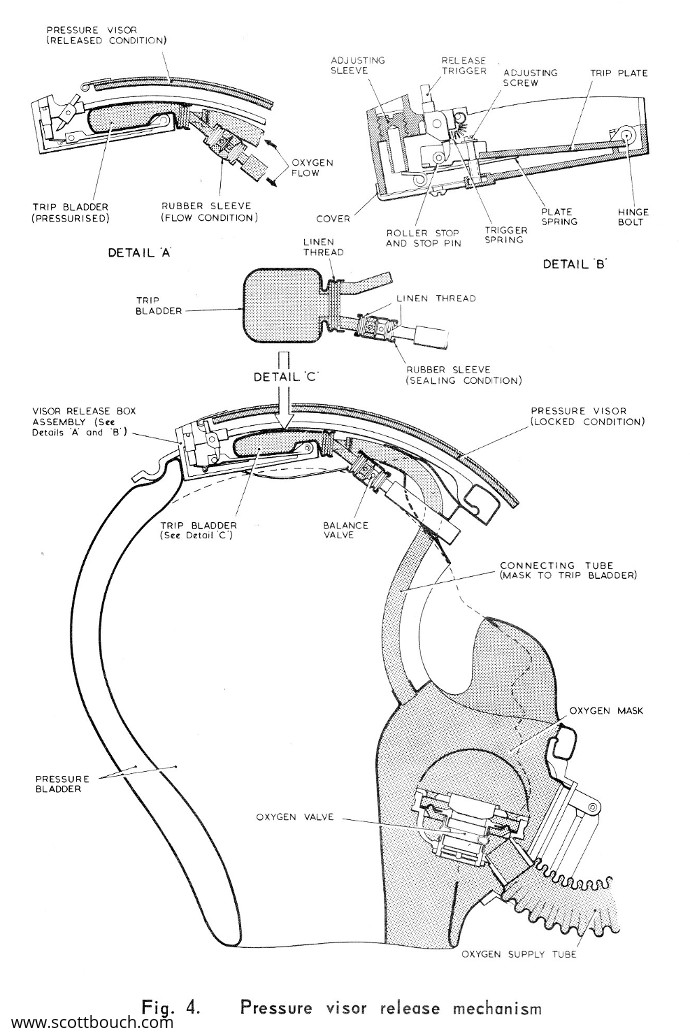British E-Type Partial Pressure Aircrew Flying Helmet
Used for flying at high altitudes in conjunction with a pressure jerkin, and high altitude oxygen hose (PEC), in case of a cabin depressurisation. This equipment would allow the aircrew to "get down" safely.
Developed and produced by Baxter Woodhouse & Taylor Ltd (BWT), who are now Senior Aerospace and now specialise in aircraft components made from lightweight materials. The helmet was developed in the late 1950's, and seen in service in the early 1960's.
the E-Type partial pressure helmet is not to be confused with the cloth E-Type. It is commonly called the "Taylor Type E".
The purpose of the partial pressure helmet and Jerkin is to attempt to equalise the pressure in the aircrew's lungs with that applied to the outside of the body. This is particualrly important under cabin de-pressurisation at high altitude, where the pressure differential would be large.
The helmet (much like the pressure jerkin) contains bladders to exert pressure on the head, equal to the oxygen supply pressure. The helmet also senses the cabin pressure, and upon a depressurisation event, it automatically snaps the visor down to seal the face.
Service Images
T4 Lightning
This image of a T4 Lightning in bare aluminium shows it's crew entering or exiting the cockpit in High Altitude gear, including E-Type partial pressure helmets, Mk4 Pressure Jerkins, and Pressure Jerkin Hoses Mk2 (PEC).
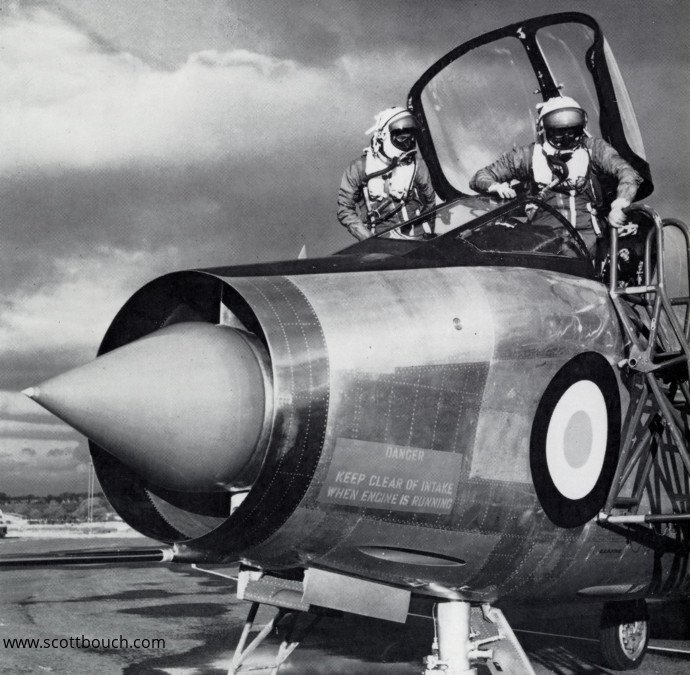
F1 or F1A (?) Lightning
The pilot wears High Altitude gear, including Taylor E-Type partial pressure helmet, Pressure Jerkin, and Pressure Jerkin Hose Mk2 (PEC).
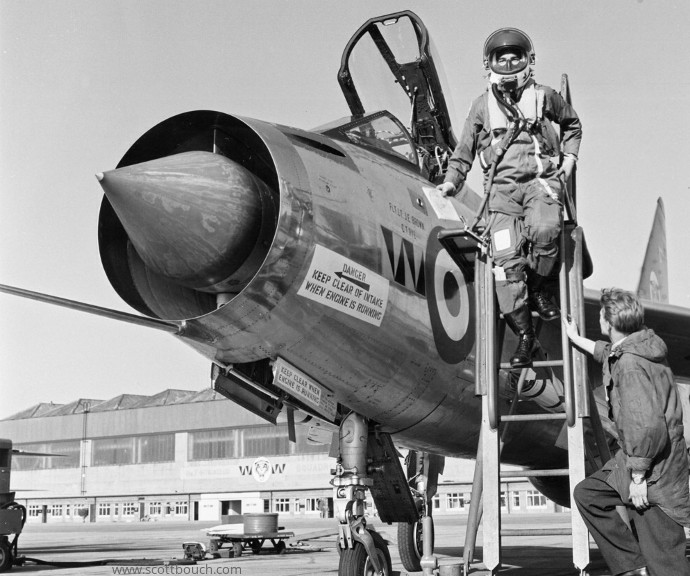
Research Lab
Interesting shot showing an E-Type partial pressure helmet with a partial pressure suit worn while carrying out cycling excercises, possibly at the IAM, Farnborough. Note that the suit / helmet's oxygen supply hose is connected to equipment just off to the right of the image.
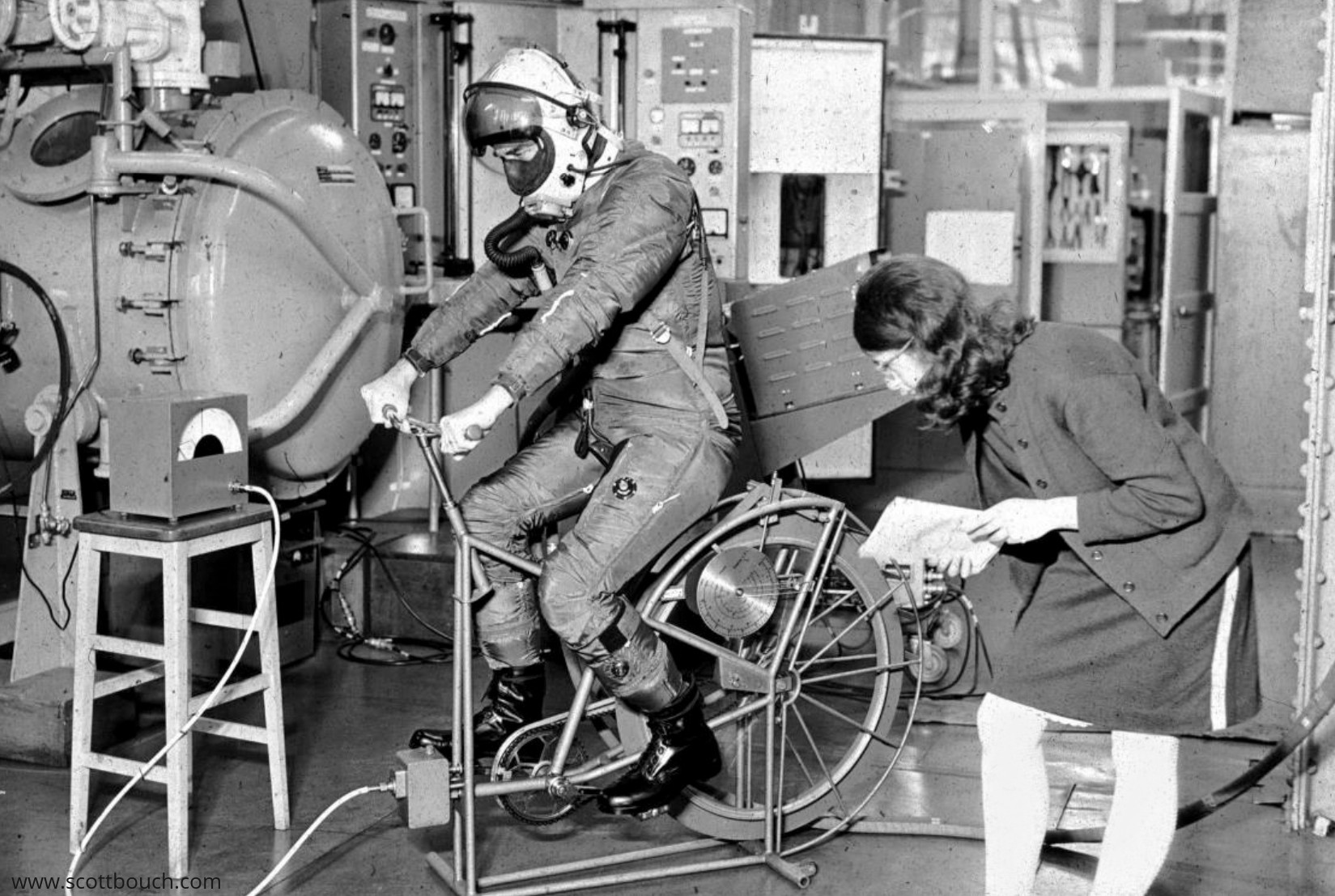
Advertisements / Brochures
Flight Magazine 30th November 1961 - BAC Advert for the Lightning Mach 2 trainer
This advert must have been referring to the T4, as the first T4 entered XM966 RAF service 2nd October 1961. The first T5 (XM567) flew 3rd March 1962.
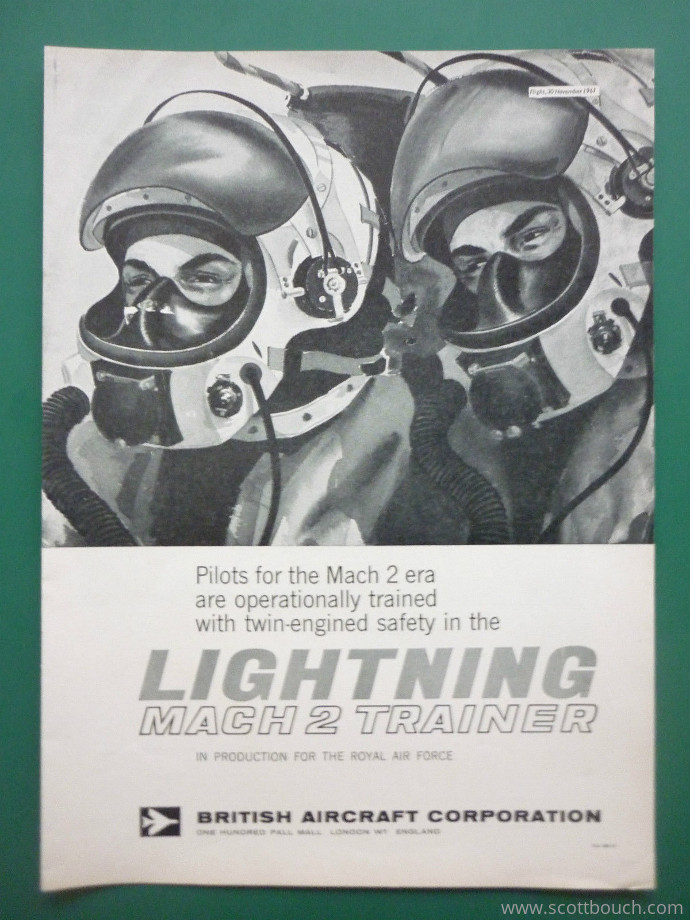
Factory Images
I was very lucky when an old friend sent these images to me, they show a rare insight into the production of a special helmet.
Looking at them, it's amazing how such a technologically advanced helmet (for the time) was produced in a factory that resembled a shed, with fixtures made from bits of Dexion. I believe this reflects the high levels of talent and care of the people who made them.
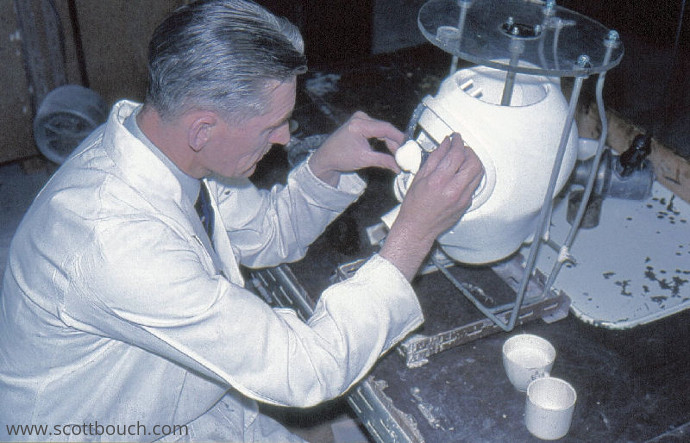
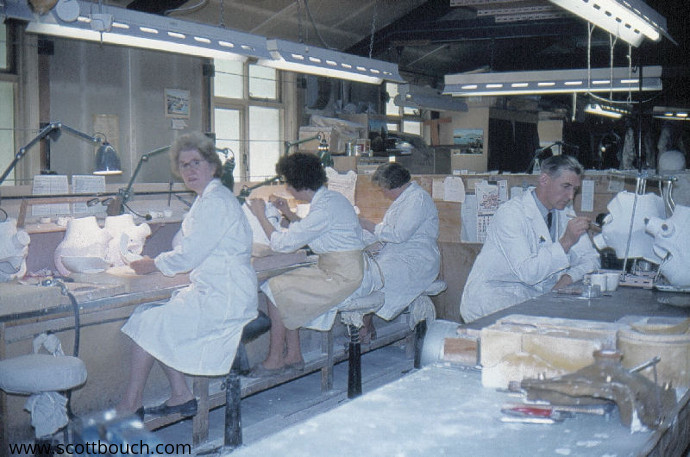
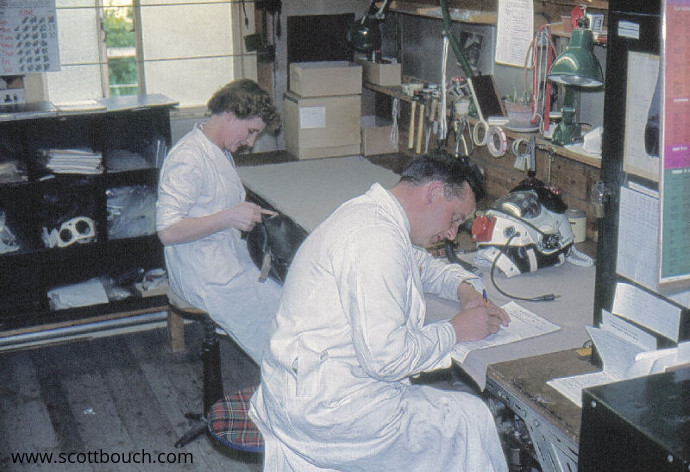
Manufacturers Resources
Baxter Woodhouse Taylor Type E Manual
Date unknown, images from the manufacturers manual.
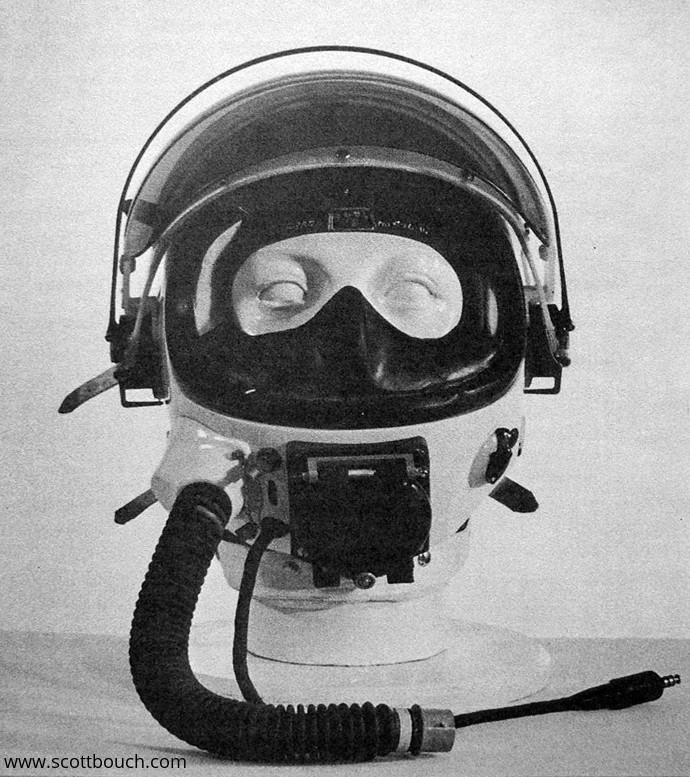
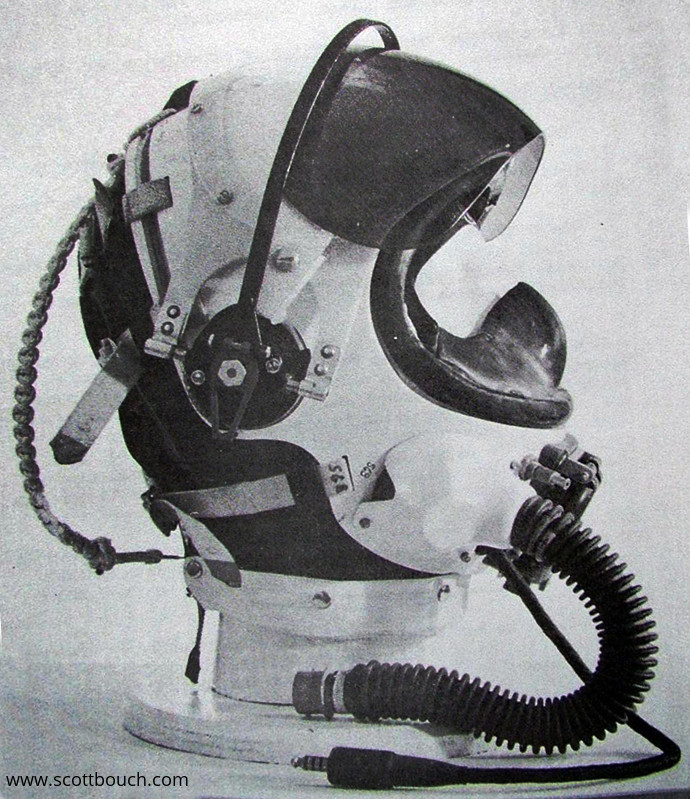
This image shows the inner pressure bladder removed from the helmet, the trip bladder is shown in a raised position at the top.
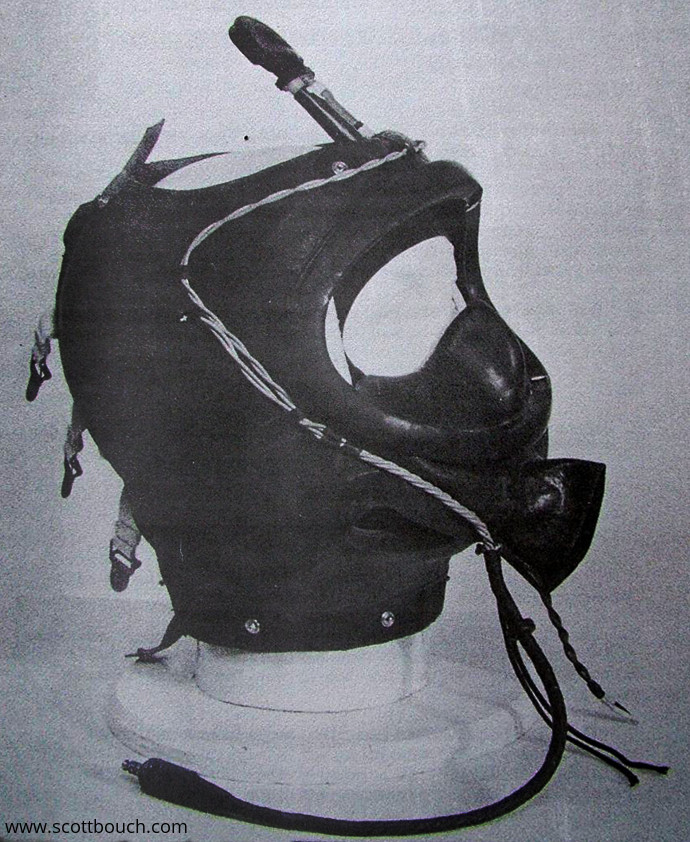
ML Aviation Co. Ltd. - Lightning F3 AEA Poster 1966
Poster of the recommended AEA for Lightning F3 aircrew, including E-Type partial pressure helmet.
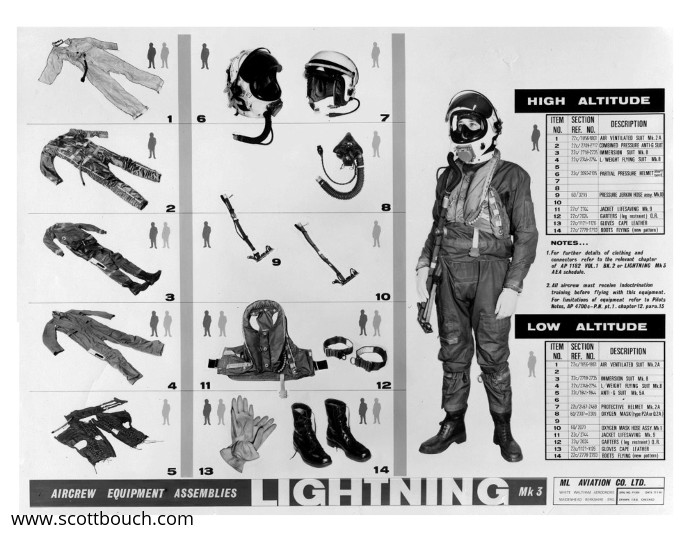
RAF/RN AP Resources
AP1182E Vol 1, Section 1, Chapter 23, Fig 1, (AL98, January 1963)
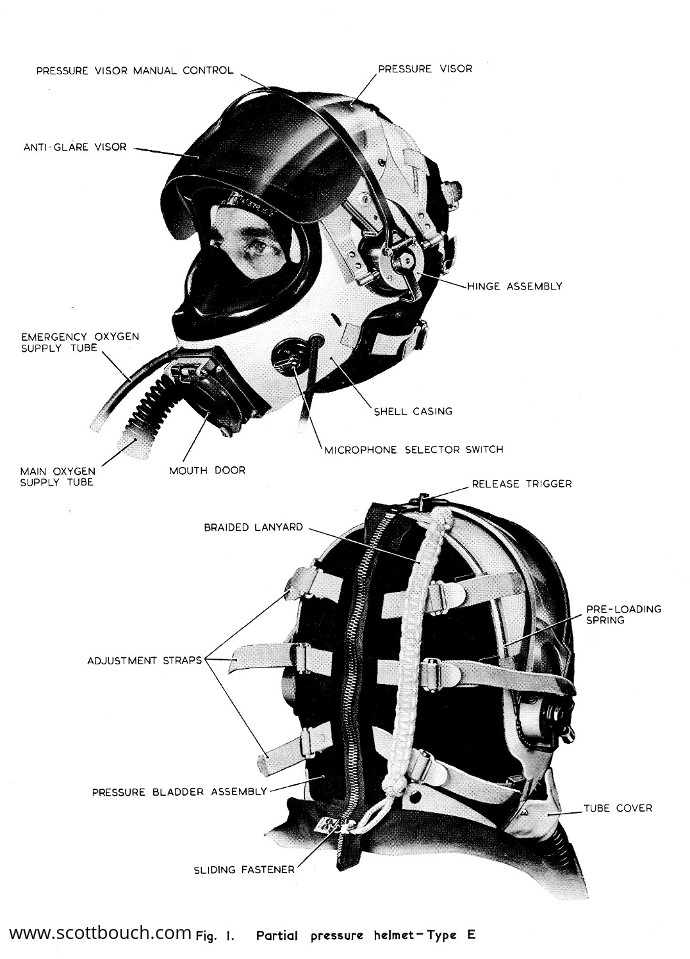
AP1182E Vol 1, Section 1, Chapter 23, Fig 4, (AL98, January 1963)
Fig 4 shows a nice cross-section of the Type E helmet, and illustrates how the visor automatically is released from it's raised position latch by the trip bladder.
Detail B shows the mechanism in the raised latched position.
Detail C shows the trip bladder inflated, visor released and on it's way down.
The trip bladder is connected to the oxygen mask, and if the mask pressure exceeds cabin pressure (upon cabin depressurisation), the trip bladder will inflate, releasing the visor. Oxygen is passed from the trip bladder to the main pressure bladder (via the balance valve), inflating it around the aircrew's head.
